When on the subject of adventure bikes, few people bring up learner-legal offerings. But after ripping around on these single-cylinder go-anywhere bikes, that deserves to change.
The subject of LAMS approval is seldom the topic of discussion when you’re standing at the bar talking about adventure bikes. The same names are guaranteed to crop up – BMW’s R 1250 GS, KTM’s 1290, Honda’s Africa Twin – all big-bore multi-cylinder units with big dimensions, big weight and big prices. These monsters are off-limits to punters small of stature, low on cash and those making their way through the process of getting their full licence.
But you really don’t need the biggest baddest adventure bike to conquer this big brown land – and these four bikes, while learner legal, can carry experienced riders and beginners to smile-ville in a manner that’s less daunting, far cheaper and just fun as their larger counterparts.

We’d normally just break out the Rolodex and call on the usual brigade of testers we’d use for any other test, but we wanted some fresh input from a couple of roadbike riders who grew up on dirtbikes and who’d love to own adventure bikes but simply can’t justify the cost. That’s where Ken and Mark come in.
All LAMS bikes boasting the simplicity and weight advantages of having single-cylinder engines, there’s something for everyone in this group, Honda’s CRF300 Rally is arguably the most off-road focused and if you came from years of tearing around on dirtbikes, the Honda is the bike that can do the off-road business in a familiar way.
Kawasaki’s KLR650 is the much-loved stalwart of the group, and for good reason. It’s capable off-road if you can handle the size and weight, and the extra cubes means it’s a more versatile mount capable of doing highway miles in relative comfort. There’s fewer reasons to upgrade if you’re restricted licence is coming to an end – the KLR is a big reliable beast that’ll go forever.
The BMW G 310 GS shares the same platform as its road-going G 310 R stablemate, and it shows. The Beemer is the most road orientated of the bunch and, if you’re looking to commute with the occasional off-road cruise, the G 310 GS is king.
Royal Enfield’s Himalayan is a popular choice for inner-city hipsters with an Instagram account filled with wanderlust hashtags, but the Himalayan is capable of way more than that. A surprising amount. Much like a tank, it’ll go pretty much anywhere just don’t expect it to get there fast.

To compare them, we spent a full day riding in and around the lower Blue Mountains and, as is usual these days, it rained. ‘Rained’ doesn’t do it justice, deluge would be more apt, and it rained so damn hard and so damn much that the photographer’s camera crapped out and even caused the sole of Ken’s Alpinestars Tech 10 boot to drop off.
We rode these LAMS adventurers in sand, climbed rocks, entered caves and splashed our way through waist-high bog holes and each bike handled the conditions with aplomb, despite rolling on less than ideal tyres for the conditions. I’ve got some off-road riding under my belt, and I wouldn’t be keen on doing the same ride on a jumbo adventure bike.
To say that we were all suitable impressed with our machines would be an understatement, but they aren’t perfect and they have limitations. The biggest is their low capacity. The KLR aside, they are all working hard in highway mode so if you’re planning on punching out big kays then a bike with more cubes will make you happier. But what they lack in ponies and electronic wizardry, they make up for with user-friendly performance, and as we found out, you can take the little buggers anywhere! If you’re happy to take a more relaxed pace getting to adventure nirvana you can do just as much and have just as much fun on a LAMS learner-legal adventure bike.

BMW G 310 GS: Clever pedigree
I didn’t know what to expect from the LAMS BMW, I wondered whether this was an exercise in clever styling rather than off-road capability. But right from the off, you realise the G 310 GS is the work of an experienced adventure bike manufacturer; the seat height, the shape of the fuel tank and the ergonomics both at speed on the highway and standing on the ’pegs in the bush are all well thought out.
While it’ll commute beautifully and handle gravel roads respectably, country back roads are this bike’s specialty. The power is smooth and subtle, and fifth- and sixth-gear flowing corners linked by long straights are where the little single really surprises you. It’ll do highway speeds no worries, but it’s much happier in the 80-100km/h region than it is at 110km/h where it feels a little laboured.

The light clutch on the LAMS adventurer made easy work of traffic or of slower going and the non-adjustable 41mm upside-down fork is firm and predictable in riding most conditions, doing a great job of soaking up the bumps, but it became a bit too soft once the pace increased on the road or when the tracks deteriorated off it.
With 180mm of suspension travel at both ends, it was time to test it out on the fire trails to see just how deep into the bush it can realistically go. Switching between sitting and standing, I soon realised that through open trails, the bike is just as happy if you’re perched on the super soft seat and let the suspension do the legwork.
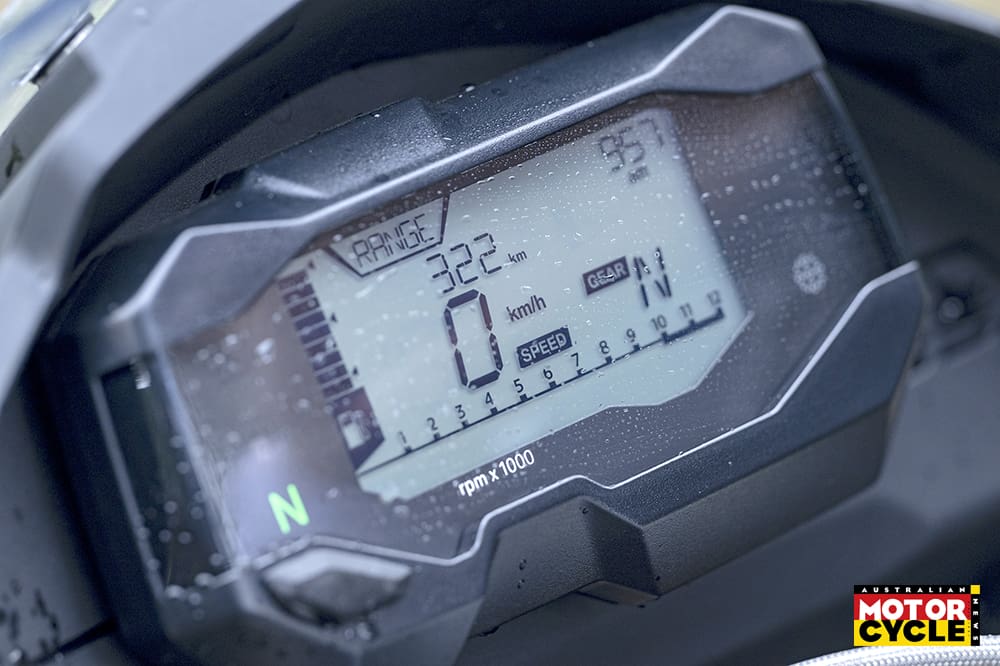
The road-biased tyres really let the bike down in the conditions we were riding it in, but the chassis and suspension made up for a lot of the reduced confidence. Even through soft dirt and rocky sections, there was no pull through the ’bars which encouraged me to head a bit deeper into the scrub than the tyres really allowed for.
In the really slippery stuff, I found second gear was my best friend. Fast enough to power through the puddles, enough torque to keep the bike straight and just enough engine braking to keep the rear end behaving on the long slippery downhill sections. I took this LAMS adventurer well out of its comfort zone, in a heavy storm no less, and it rode me in and out of there in one piece.
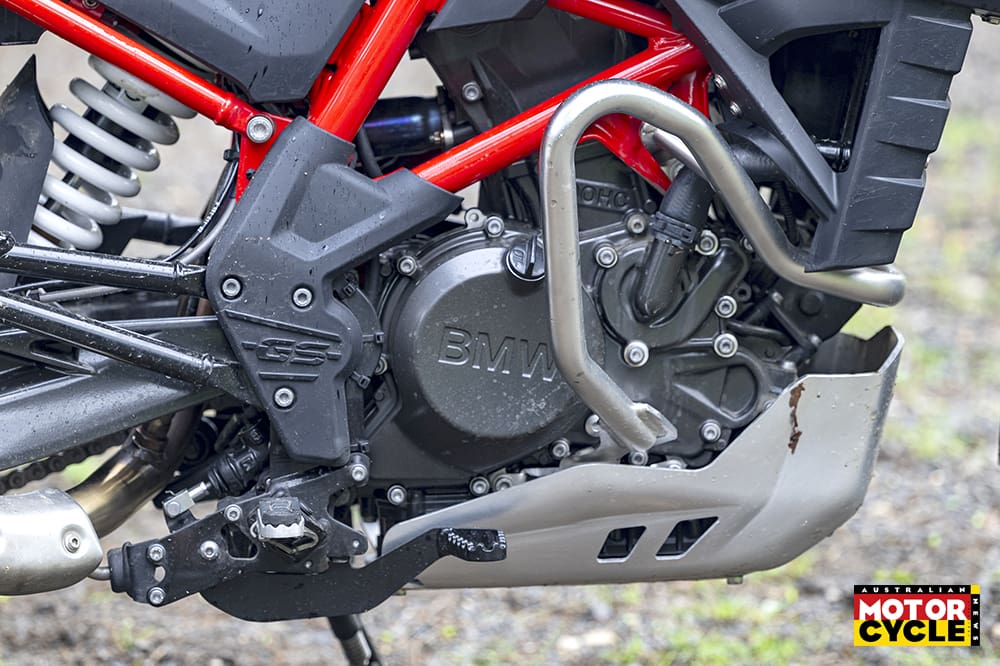
With a slightly more aggressive tyre and possibly some form of frame guard, the overall comfort and price point this bike would be bloody hard to ignore if you’re looking to venture a little further off road. I spent six hours on the seat, with every type of riding I could throw at it, and once I finished washing the mud of me and the bike I was I was surprised to find I had no aches or pains – that wouldn’t be the case on a big-bore bike. There’s plenty of enjoyable adventures to be had on one of these lightweight all-rounders.
At a glance
Capacity: 313cc
Torque: 28Nm
Suspension travel: 180mm/180mm
Weight: 175kg (wet)
Seat height: 835mm (+/-15mm)
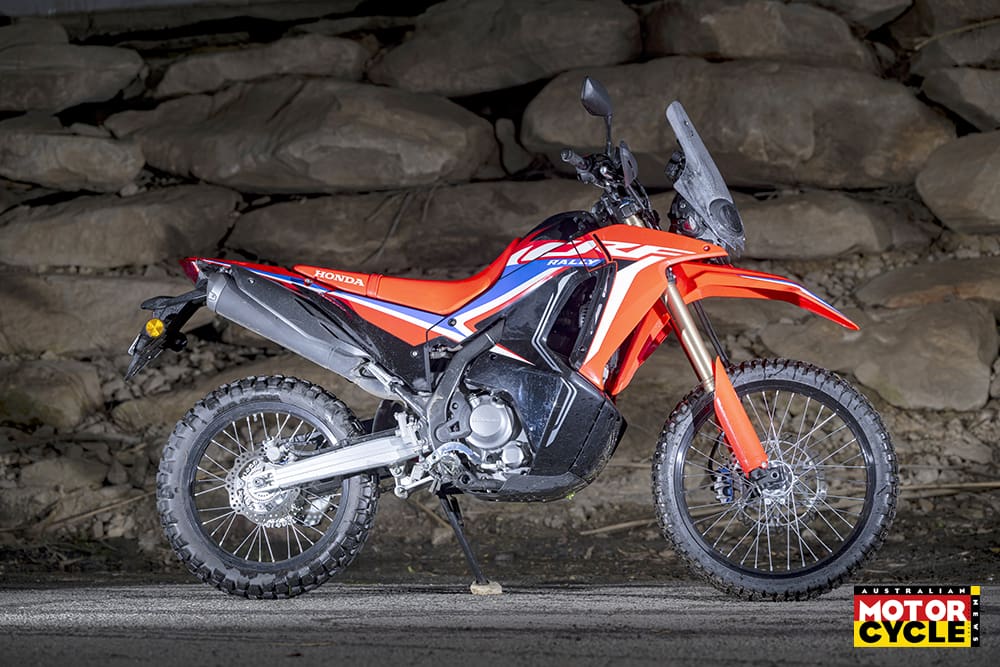
Honda CRF300 Rally: Enduro mode
If, like me, you came from a pre-licence life of dirtbikes, then the CRF is the pick of this bunch. The Rally is based on the CRF300L traily, but it’s Dakar-style bodywork offers far better protection from the elements than it’s chook chaser relo. And looks damn good too.
The 300 Rally LAMS adventurer superseded the 250 and the fuel-injected single cylinder’s increase from 249cc to 286cc has increased bottom-end and mid-range grunt according to Big Red. Around town and out in the bush the power is adequate, and it can carry my bulk down the highway at an indicated 110km/h without complaint.
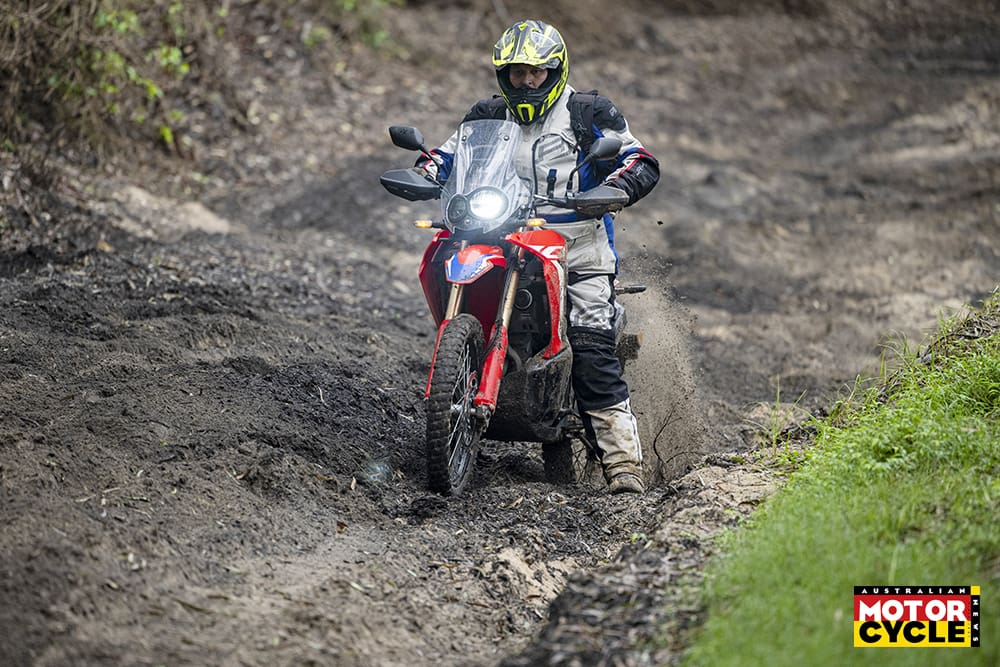
Gearing is spot on for fire roads and a bit of single track, but if the going gets tight you may want to lower it. In saying that, the standard gearing is comfortable at highway and taller gearing will save you a dime or two on fuel.
Ergonomics for road riding are comfortable, and the well-padded seat carries on up the 12.8-litre steel tank enough that it doesn’t restrict your movement too much when you’re off-road.
The off-road riding position is excellent too, apart from the junk steel handlebar which is too low for me, but other than that, the stand-up ergonomics of the LAMS adventurer are great and moving around on the bike is easy.

My only real gripe is with the standard Showa suspension. It’s plush and off road, I bottomed out both ends frequently. The 43mm USD fork offers no adjustment and the rear monoshock only offers preload adjustment. At $8649 (plus on-road costs) I’d be happy to pay a bit more for some adjustability – it’s not like Honda doesn’t have a range of off-road suspension to choose from. But if you’re not spearing off jumps and the terrain isn’t too gnarly, then you can punt the Rally through the bush at a very respectable pace. And in the sand, it’s an absolute ball. The flipside of the soft suspension is that it offers up a nice smooth ride on the road sections – although I did still bottom out on some high-speed dips.
As for the brakes, well, I didn’t even think about them. The front runs a hefty 296cm disc with a Nissin twin-piston caliper, while up the back you’ve got a 220mm disc gripped by a Nissin single-piston caliper. Both ends are ABS equipped which can be turned off via a dedicated button on the right-hand side of the LCD instruments. It does look a bit like it was wired up and mounted by a previous owner, but it does the job.
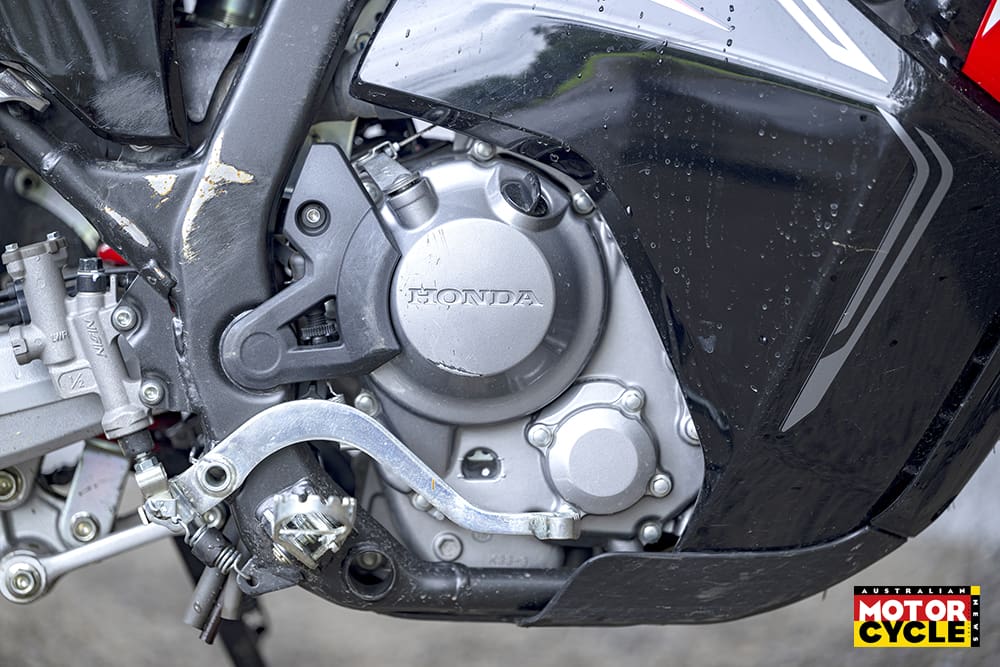
Despite the suspension, the Rally would still be my pick if I was in the market for a LAMS approved adventure bike. With a few bob spent on the suspension it would be a serious off-road machine capable of more than any of the others on this test – and on top of that, it looks fantastic.
At a glance
Capacity: 286cc
Torque: 26.6Nm
Suspension travel: 234mm/260mm
Weight: 152kg (kerb)
Seat height: 885mm

Kawasaki KLR650 Adventure: Adventure ready
The KLR650 is jack of all trades. It’s rugged, simple and capable. Kawasaki has kept with its trusted formula of the five-speed 652cc counter-balanced single for many years. This most recent edition is fuel injected and has some minor engine tweaks to pass the stringent Euro 5 emissions testing, while still maintaining that reliability and character.
The LAMS Adventure version of the KLR650 is an ultra-capable dual-sport machine right out of the showroom. I have no doubts that I could load this rig up with gear and a few tools for minor roadside repairs/maintenance and ride it right across Australia. It comes equipped with crash bars, engine protection, fog lights, power outlets and hard pannier bags. This particular bike is also fitted with top box and heated grips that get hot enough to burn your hands right off.
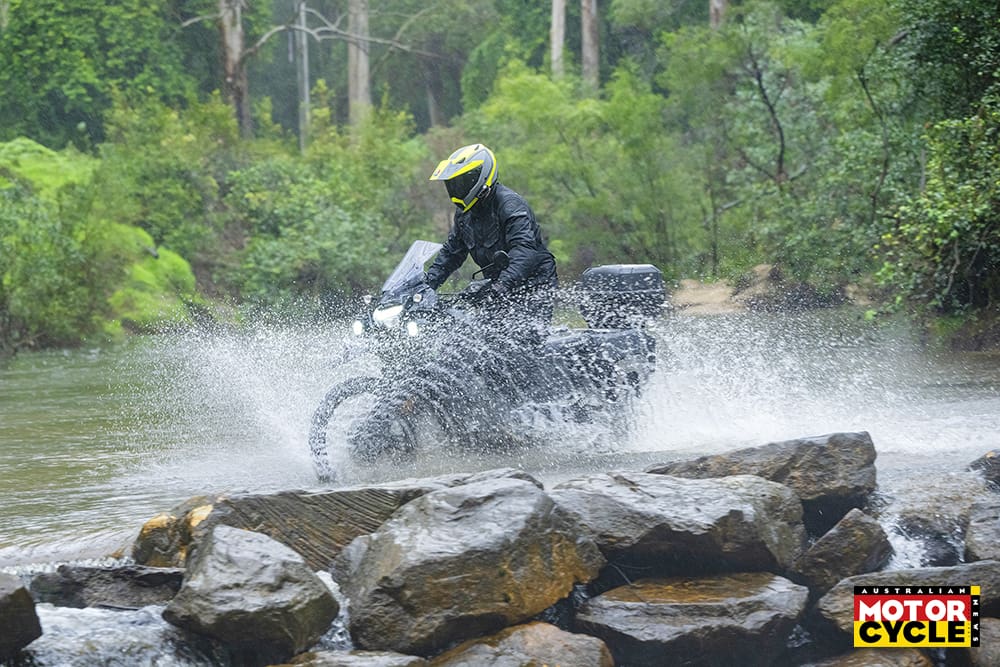
The big KLR is focused more on the off-road end of the spectrum and eats up dirt roads for breakfast, making light work of corrugations, puddles and potholes. Sending it over jumps and erosion mounds at speed however, is not ideal, especially if you have your bags loaded up. But heading well off the beaten track can be done with confidence due to decent ground clearance, plush suspension and reliability of the trusty Kawasaki single. With the new fuel injection and emissions tweaks, the 650 is quite frugal and the 23L tank should mean over 400km of range between fuel stops.
Its capabilities don’t end when the dirt ends either. With 28.5kW on offer you won’t set land speed records, but the wide ratio gearing sees the KLR able to maintain highway speeds and in comfort. Compared to the other bikes on this test, the KLR looks big and dated, but it is the real deal even in non-LAMS bike terms and its size allows taller riders room to move and get comfortable. This LAMS adventurer is a viable touring option for larger riders even if they aren’t planning on exploiting the KLR’s off-road capabilities.

Speaking of comfort, the soft one-piece seat lets you move around to find your preferred position. There is good weather protection from the hand guards, fairings and non-adjustable screen which sits pretty low to not get in the way when riding off-road but still keeps the brunt of the wind off you. It doesn’t create that annoying turbulence on your adventure helmet, either.
I feel that taller people would want to put some bar risers on it for extra room when standing up. And if you like to stand up off-road, you’ll want to add add some metal footpegs too, the rubber ones are terrible in the rain and mud.
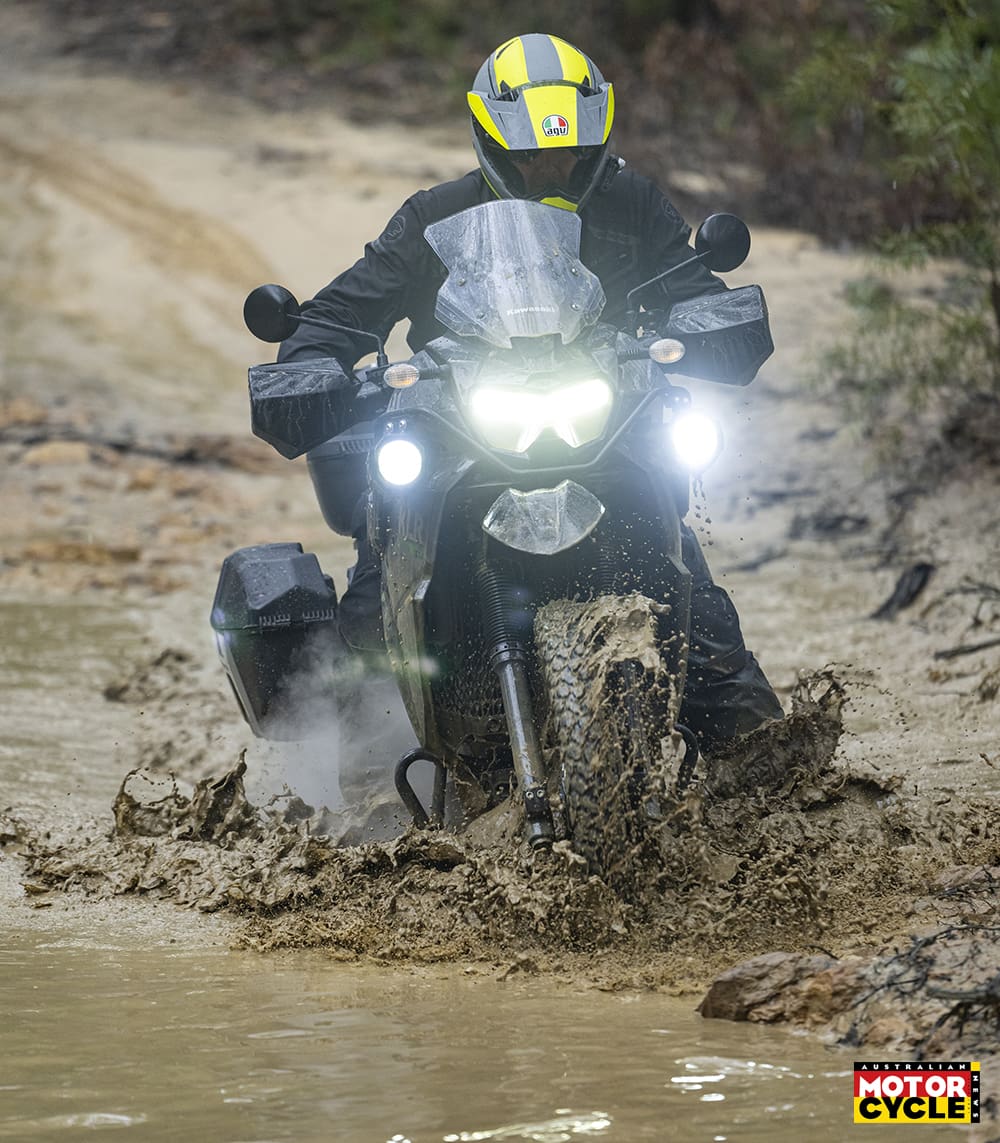
Making bank at a smidgen over $12k (ride away) for the spec we’ve tested, you would be hard pressed to find a more adventure-ready rig for your hard earned. The KLR650 should feature on anybody’s list who’s looking to get into adventure riding. Even if you have your unrestricted licence.
At a glance
Capacity: 652cc
Torque: 51.5Nm
Suspension travel: 200mm/185mm
Weight: 222kg (kerb)
Seat height: 870mm
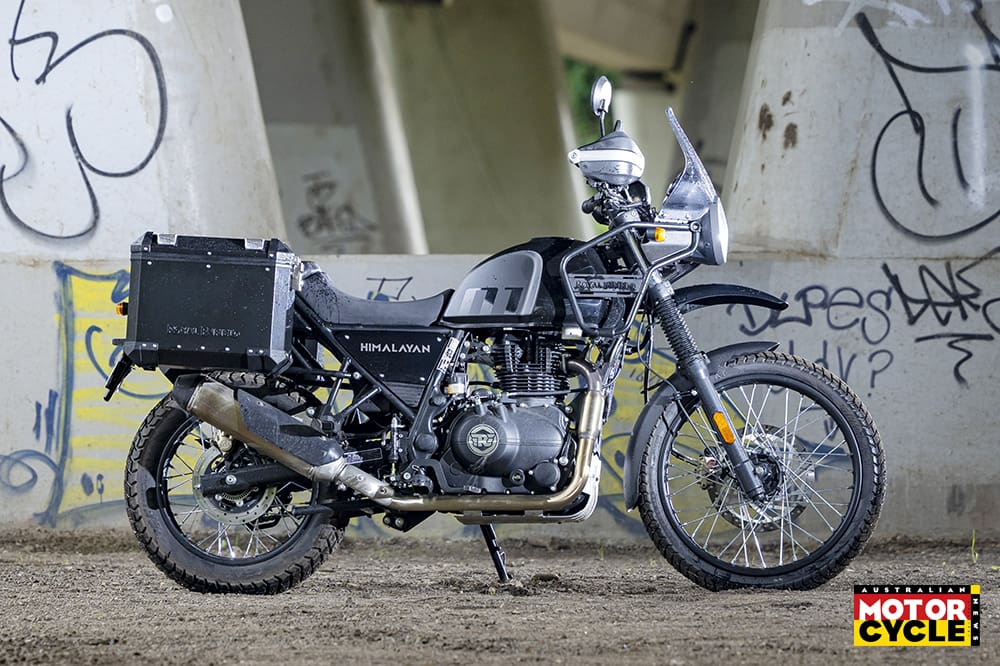
Royal Enfield Himalayan: The mountaineer
At first sight, the Royal Enfield took me straight to The Great Escape with its rugged go-anywhere looks. The Himalayan we have on test is fitted with what Royal Enfield Australia call the Black Series Adventure Kit. It includes a set of 26-litre aluminium panniers plus mounting kit, as well as guards for your hands, the engine, the master cylinder guard and the oil cooler. All that swag is usually valued at $2020 but is available for $1290 between now and the end of the financial year.
When you throw a leg over you immediately notice just how comfortable and soft the seat is. Reach forward, turn on the key and the four-dial dash comes alive. As well as an analogue speedo and tacho, the Himalayan boasts a fuel gauge, compass, gear selection indicator and, if you download the appropriate app, clever but simple turn-by-turn navigation.
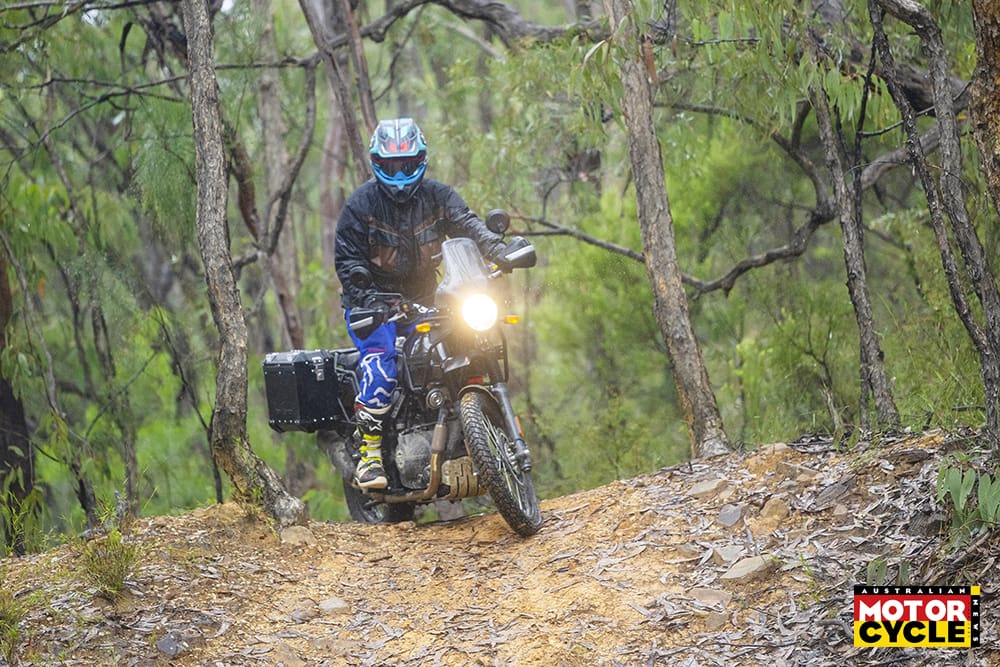
And it’s that clever simplicity that’s the jewel in the Himalayan’s crown. Although it doesn’t have a lot of power, its 411cc air-cooled single has enough poke to keep you out of trouble. The vibrations from the motor are there but they’re subtle and the ride is surprisingly smooth and comfortable out on the on the road. It has a low 800mm seat height and a narrow girth, so your feet are well planted on the ground when you stop, and it boasts one of the best turning circle’s you’ll find on an adventure bike so it does U-turns and slow-speed manoeuvres with ease.

Despite the dreadful conditions, the bike still the bike felt really stable and easy to ride. And although I was quietly questioning the tyres and the suspension as we turned off the black top and headed bush, I very soon found the answers I wanted. As the road became rougher, the bike wasn’t fazed and even when I was powering through the deep sand, all I could think was how much fun this bike is too ride – it has enough power to cope with anything we could throw at it and I couldn’t get the smile off my face.
Then in the muddy rutted fire trails it slides around a bit, but everything that’s happening underneath you is predictable. Ground clearance becomes an issue in the deepest 4WD ruts, however it handles deep puddles well and will just keep riding out the other side like a tractor.

The front ABS doesn’t intrude off the road, in fact I barely felt it come on. There is an ABS button on the left-hand side of the cluster which allows you to turn off the rear ABS, which is a bonus. The bike on test wasn’t properly run in and I experienced a few electrical gremlins – though in that amount of rain and through those sets of conditions, any one of the bikes could have and we wouldn’t be too surprised. Importantly though, despite the engine light flashing on intermittently, the bike didn’t miss a beat all day. Overall, it’s a bloody good bike for the money.
At a glance
Capacity: 411cc
Torque: 32Nm
Suspension travel: 200mm/180mm
Weight: 191kg (kerb)
Seat height: 800mm
Dirty rivals
There’s loads of choice when it comes to LAMS-approved adventure bikes
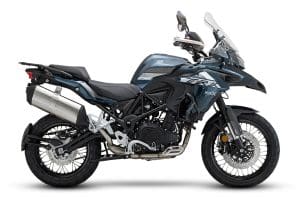
Benelli TRK 502 X
499cc parallel-twin
$10,690 (ride away)

KTM 390 Adventure
373cc single cylinder
$9970 (ride away)

Honda CB500X
471cc parallel twin
$9349 (plus on-road costs)

Suzuki V-Strom 650 XT LA
645cc V-Twin
$14,990 ride away

Aprilia Tuareg 660 L
659cc parallel-twin
$22,230 ride away
TEST: PETE VORST PHOTOGRAPHY INCITE IMAGES